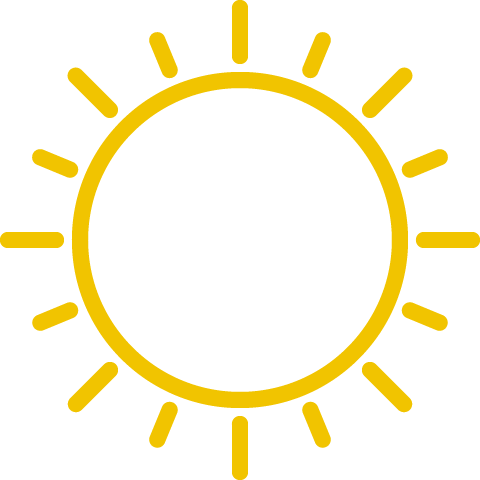
Overview
The territory of Shëngjergj is located on the east of Tirana about 40 km away from it. The villages as dwellings are positioned in the western slope of Mali me Gropa (Mountain with Pits) on the northern slope of the massive Shtog-Fag and in the western side of Derje mountain.
The entire territory has a mountainous relief, where the lowest quota is the bed of the Erzen River, meanwhile the highest quota is in the eastern massive of Mali me Gropa (Mountain with Pits).
The wonderful view with hilly and mountainous terrain is impressive. The alpine pastures, the numerous water springs, the lakes are an extraordinary present of nature. The forests of breech, pine and spruce trees are a national beauty and richness. Several types of fragrant tea but even different medicinal plants, 30 of which are exported, are grown on the mountains. Lots of plants and types of mushrooms, which represent a nature wealth, are found in the spaces and the forests of Linos (Mali me Gropa).
The entire territory is divided in 11 streams with pure water which spring in the west and when they are united, they form Erzen as a river which flows down from the wonderful canyon of Skorana and rushes through the fields of Tirana up to the Adriatic Sea.
The nature of this region is a source of culture, health and pleasure in all the four seasons, for relaxation and walking, excursions and different sports and composes a considerable touristic capacity.
History
It is thought that in XII-XIV centuries, the region was called “Tomadhe” or “Tame-Dea” – “the Goddess of Water Resource”. In the history of this region, even its geographical position has played a considerable role, where the important pathways were exploited even by the invaders during the centuries as entrances-exits.
Scanderbeg used it as a defence area and as an area of his battlefields activities. He would go through those areas very often, particularly during 1443 in support of Vladan Arianiti, whose sister he was married to.
In 1572, this region was the centre of the uprising against Kruja which was invaded by the Ottomans. After 1600s, it was called “Shëngjergj” and this name became official after 1900, as a century without the Ottoman Empire, in the fight for education and social development.
During the II World War, in November 1943, the General Unit of the National Liberation Army stayed in Shëngjergj and II Partisan Brigade was created there. Also, during this period, four hospitals have functioned in this region for the wounded partisans, meanwhile the field of Biza was used as a parachuting base by the alleys for supplies.
Territory of the numerous churches
The existence of the names of the villages Shëngjergj, Shënmri, Shëngjin, as old dwellings; nowadays inhabited villages close to each other and tens of saints’ names, such as the names of the places, the streams and churches which have remained as toponyms, refer to a special history.
It is thought that the nominations, nowadays the toponyms, have become popular or famous long before 1200, because there are historical canals which prove that in this time, the inhabitants of the region were choosing even the religion of Roma (Catholics) because they had been preserving the byzantine one (orthodox) for a long time.
The churches were weakened step by step, because they were not managed to be kept by their care taking-priests who were under the jurisdiction of Benda Dioceses.
The Christian history of the region lives in legends, in the church annals as written facts and in the numerous nominations that are noticed when you walk by and hear about places and people.
Around 1500s, the Islamisation of the local population started, meanwhile around 1700, it had almost finished in this region. In this time, was noticed the construction of the shrines and mosques, which indicates the religious and spiritual conversion of the inhabitants without changing their dwellings. In some cases parts and the stones of the foundations that had remained from the ruins of the churches were used.
Almost all the villages had mosques, the biggest was the one of Shëngjergj, meanwhile the oldest and the most monumental one was the mosque of the village Ura (constructed around the years 1772-1776). Only the mosques of Shëngjergj and Shënmëri had minarets, they had just a balcony for the Ezan “calling for prayer”.
Tradition
Everybody who visits this region, apart from the pleasure provided by the nature beauties and the historical and cultural values, may enjoy even the variable cuisine offered by this region of the Middle Albania.
Some authentic specialities of the region are known in the tables of Shën Gjergji such as: goat cheese with olive oil, cottage cheese with olive oil and eggs, mountain tea with honey, fërgesa (fried curd) and the bread with white corn flour, rice with crushed grain and the local black bread, the roasted meat of the kid – baby goat (grown in Fag, etc.)
The folk outfits are of the most interesting and the oldest ones in the Middle Albania. The region of Shëngjergji is known even for the craft works and particularly for the works of the carpets in the loom. The preservation of the tradition of making the carpets is a characteristic of the region.











